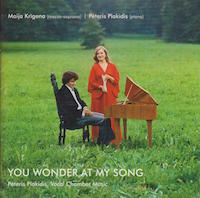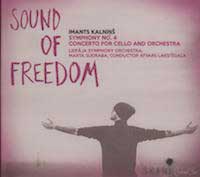Latvia, with its abundance of musicians, has produced groups performing in just about every musical style. For such a small country, the diversity in Latvian performers is quite extensive, and many artists have achieved critical and commercial success. However, a genre that remains minimally explored among Latvian musicians is progressive rock.
The term progressive rock, an altogether vague term (the general idea is that this style of music is a ‘progression’ or even evolution from rock music itself), refers to groups that put a greater focus on musicianship, headier and weightier lyrical topics, and, generally, play longer and more complex songs, often with multiple tempo and style changes within a single song. This style of music, though perhaps achieving its greatest artistic peak in the 1970s with British groups likes Yes, King Crimson and Pink Floyd, continued to expand and grow in the decades afterwards, with successes from groups like Canada’s Rush and America’s Dream Theater. One might think that such challenging music might have difficulty finding an audience, but the genre boasts millions of fans all over the world.
It is perhaps a surprise that few Latvian artists have embraced the progressive rock style – much of Latvia’s contemporary classical music is difficult and challenging. Still, of the few Latvian bands to perform in this genre, the group Holy Lamb has achieved perhaps the most success.
Holy Lamb can rightfully be considered veterans – the band was founded back in 1991 and almost a quarter century later, at the end of 2015, released their fourth album Gyrosophy. Perhaps coincidental, perhaps not, but another common aspect of progressive rock ensembles is frequent lineup changes – more than a dozen musicians have performed as part of the group. Today, the group’s lineup has stabilized and is Aigars Červinskis (bass, vocals), Juris Rāts (keyboards), Aleksandrs Volperts (guitar), Ansis Markauss (guitar, bass) and Toms Circenis (drums).
Their many decades performing is clearly audible on Gyrosophy, as the album is a polished and mature record, displaying the extensive musical talents that listeners have come to expect from the best progressive rock outfits. Spanning a wide variety of styles and influences, Gyrosophy is one of the most satisfying progressive rock albums in recent memory.
Often, many progressive bands are dreadfully serious, but Holy Lamb does add the occasional touch of humor in their music, which is a welcome addition. In fact, Gyrosophy opens with the curiously titled “PorkPower”, which even includes pig noises among the textured melodies. The swine theme is also reflected in the album’s cover art, which also features a pig in space (perhaps an indirect reference to the Muppet Show’s ‘Pigs in Space’ sketch).
The melodic aspect of Holy Lamb’s music appears on the song “To the Boy I Used to Be” – vocalist Červinskis provides a reflective performance, appropriate for this song about lost innocence. Guest artist Liene Sējāne gives the song an additional dimension with her flute performance.
Guitarist Ansis Markauss provides a solemn introduction on acoustic guitar on ‘Murderous Words’, which then turns into a harsher, edgier motif for this song about the biting criticisms we unleash on each other, particularly those closest to us.
‘Trouble Vision’, the longest song on the album (just over eight minutes), is a song about being unable to let go of hopeless endeavors, especially after much time and effort has been invested, is, like many songs on the album, full of tension and anxiety. Červinskis sings ‘screaming through the forests of anguish, in hope that you’ll hear my desperate voice’, bringing forth the torment in the lyrics.
Currently Gyrosophy is only available as an internet-only download, but there are plans to release a physical album at some point during 2016. The lyrics to all the songs can also be found at the group’s Bandcamp site.
Holy Lamb have released a satisfying and engaging album in Gyrosophy – with their decades of experience they have put together a finely crafted collection of songs, revealing not just their musical talent, but also songwriting creativity. The album holds its own with other recent progressive rock releases, and hopefully will help them reach a wider audience. Intricate, accomplished, but never plodding or dull, Gyrosophy is a significant achievement for these veterans.
For further information, please visit www.holylamb.lv

Gyrosophy
Holy Lamb
2016
Track listing:
- PorkPower
- To the Boy I Used to Be
- Murderous Words
- In the Safety of My Hilltop Empire
- Trouble Vision
- This Amazing Race
- Out of Place
- Down the Memory Hole





